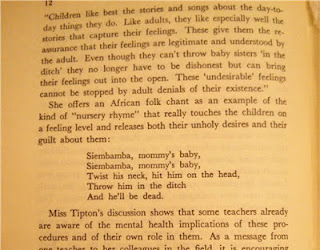 |
| One of five photos in the entire book that shows a lake. |
The English Lake
District, by Molly Lefebure, first appeared to be something akin to an
atlas but outside of the map preceding chapter one, the 212 pages contained photographs
but no other cartography. Instead, it billed itself as an exploration on
everything that is “most characteristic about the Lake District”. Published in 1964,
the book actually seemed like it dated earlier due to the subject matter and
the topics covered. The traditional naming of the water bodies may also have
contributed to this.
 |
| Could not locate Winterfell. |
A day before this book came out of the Biblio-Mat I had a
long discussion with a friend about taking advantage of the Working Visa
program where, as a Canadian under 30, I could receive a work visa for the
United Kingdom with minimal paperwork. Nomadic in nature, this appealed to me
greatly except for the fact that I would be leaving the great Canadian outdoors
behind for the questionable English countryside. When The English Lake District fell out of the machine it was like an
answer to my internal queries of whether the nature in Britain can compare to
my motherland. Unfortunately, this answer was mostly useless as the Biblio-Mat
seemingly derives pleasure in giving you what you want but not what you need (it
is located in a shop of books and curiosities
named ‘The Monkey’s Paw’, after all).
The first lines in The
English Lake District read, “You will search in vain for lakes. Meres and
waters and tarns abound, but strictly speaking there is not a genuine lake from
Ennerdale to Mardale, from Bassenthwaite to Coniston.” One wonders how many people
have purchased this book based on the title then given up after these two lines.
However, what followed was one of the few bits of useful information contained
within the pages – the word ‘lake’ apparently did not exist in this area until fairly
recently as it is not an indigenous term. Sadly, the educational value of this
book only went downhill from here.
 |
| But no way out. |
The eleven chapters in this book were divided up into coverage
for the various regions in the Lake District. Beginning with Kendal and Kentmere,
Lefebure described the countryside in brief but hammered in that to fully
experience the beauty of the Lake District, one must walk rather than ride in
motorcar. I am all for walking great distances, but eleven regions may be a tad
ambitious. After the second page, though, the tone of the book shifted and it
became a history book describing the different nobility that lived in the area
and their lineage. Most surprisingly were the offhand remarks on various ladies
of high society, specifically which ones provide pleasant company and which
ones you should avoid unless you wanted your ear talked off. Rubbing shoulders
with the upper crust appears to be as easy as simply showing up outside manor
doors on foot.
 |
| After trekking through the Shire. |
Just when I thought I had the premise of this book nailed
down, it shifted again in the next chapter. Focusing on the second region of
Furness, it unexpectedly drops all talk about nobility and lineages and delves
into the history of monks and monasteries in the Lake District. The chapter after
talked solely about the military in the region, followed by a chapter on the
geological creation of another region. It seemed that each chapter was a
separate topic on England that was loosely tied to something contained in that
region. Wasdale Head appeared to have gotten the short end of the stick as its
nineteen pages were filled with descriptions on sheep and herding.
 |
| Ewe mad, bro? (Sorry.) |
Funny enough, after reading through all 212 pages, I had a
good understanding of the rural English culture and history of the Lake District
surrounding all the waterbodies but still have no inkling on what these lakes and
meres were actually like outside of being pretty to walk to. Unless there are
no other flora and fauna outside of crops and sheep, this text has utterly
failed to present the supposed majesty of British nature. If it indeed does
only just contain farms and livestock, I’m staying in Canada.
 |
| Lake Ontario from my patio. Not trading this for farmland. |
Book rating: 4/10
(For what it’s worth, the names of many areas did evoke the more entertaining world
of A Song of Fire and Ice)
Random quote: “But
for some time now I have noticed that you are becoming restive, reader, and at
last I can feel you nudging me, politely but nonetheless with determination.” (There’s
something to be said about knowing your audience)





















